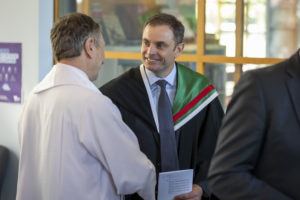High standards are critical to a positive culture of learning.
We all want the best for our children and our students. We want them to reach the potential that – at times – they cannot see in themselves, even if they are clear to their parents and teachers.
The school years are a critical journey of self-discovery, trial and error and exploring possibilities that may eventually lead to opportunities. Habits and mindsets are formed around learning. The world gradually opens to reveal new horizons each year, against the backdrop of learning.
Students are constantly uplifted by the standards and expectations that we, as educators, set to help create a positive learning environment. Standards that convey the belief and confidence we have in our students and their ability to achieve. No student or person has ever been motivated towards achieving low standards. In fact, low standards ultimately only serve to generate low self-esteem, for individuals and student cohorts. Standards bring positivity into our lives. They shine a light on what is possible and the path that we want our young people to follow; they are not just punitive actions that seek to simply punish students for doing the wrong thing.

High standards must be universal. For Beaconhills students, this ranges from wearing the correct uniform to arriving to class and school on time or completing tasks by the due date. These standards combine to create a positive learning culture where students can thrive.
Unsettled or disrupted classrooms significantly impact the wellbeing of our students and the capacity of our teachers to teach. No student has the right to interrupt the learning of others. My own experience of schooling in the 1980s was a series of chaotic learning environments, where classroom behaviour made any learning impossible. I witnessed firsthand the impact this has on young people’s lives.
Standards of behaviour are vital to ensure not only that every student feels safe at school, but that they can direct their total energy towards learning and finding their passions and interests for a life beyond school. Behavioural boundaries, like the barrier on the road or the speed limit, keep our students safe. They help guide them to make the right choices, or to learn from poor choices. Consequences are vital to help students understand poor choices and, most importantly, take responsibility for those choices and how they will move forward. The greatest gift we can give a child for the successful ‘future self’ is to teach them to take responsibility for their actions. It’s a lesson we teach with kindness, love and care, but a lesson they must learn nonetheless.
Disruptive behaviour appears to be an issue emerging across the nation which has led to a Senate inquiry into The issue of increasing disruption in Australian school classrooms. The College, like all schools, will monitor the outcome of this inquiry and hope it might not only shed some light on why we are seeing this decline in student behaviour and motivation, but also give some key strategies and recommendations on how this issue will be addressed into the future.
From our LEAD survey feedback last year, we can see that student behaviour and engagement is an area where we need to improve as a College. The College has greatly benefited from this feedback and will continue to consult with the community as staff make this a priority.
All good schools bring together a community committed to the common goal of educating our young people. I am grateful for the support from our families and the work of our staff in setting standards that we know our students are capable of meeting.
